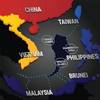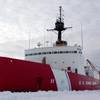CAGTC Members Win Big in TIGER VI
The U.S. Department of Transportation (USDOT) announced Friday that 72 projects will receive a total of $600 million from the sixth round of the Transportation Investment Generating Economic Recovery (TIGER) program. Of these, 12 Coalition for America’s Gateway and Trade Corridor (CAGTC) member projects were awarded a total of $135 million for projects with full costs exceeding $490 million.
One in three grant dollars, just over $198 million, was awarded to 25 projects supporting freight movement. Compared to previous rounds, this represents a decrease in the amount of money and total awards given to freight relative to other types of projects.
“This round of TIGER highlighted that across the spectrum, transportation projects need resources to be realized and even awards that are small relative to the project’s overall cost have a significant impact,” said Leslie Blakey, president and executive director of CAGTC. “We are very pleased to see such a large number of CAGTC members competed successfully in this round. We also believe that pairing TIGER with a freight-specific federal grant program would yield nationally significant economic benefits and strengthen American commerce.”
Many CAGTC Members led or partnered on successful applications this round, including:
- City of Chicago’s Bronzeville Bridge to Chicago’s Lakefront
- City of Industry’s 57/60 Confluence Freight Corridor Project
- Florida Department of Transportation’s Tamiami Trail/Everglades Restoration
- Idaho Transportation Department’s US-95 Worley North State 2, supported by CAGTC Member Kootenai Metropolitan Planning Organization (KMPO)
- Los Angeles County Metropolitan Transportation Authority’s Eastside Access Improvements
- Los Angeles County Metropolitan Transportation’s Willowbrook/Rosa Parks Station Master Plan Implementation Project
- Maryland Department of Transportation’s Fort Meade Multimodal Accessibility Project
- City of Baltimore’s Hanover Street Bridge Plan, supported by CAGTC Member Maryland Port Administration
- Metropolitan Transportation Commission’s San Francisco Bay Area Core Capacity Transit Study
- Oregon Department of Transportation’s (Oregon DOT) Regional Active Transportation Management
- Port of Seattle’s Terminal 46 Rehabilitation Project
- Virginia Port Authority’s Norfolk International Terminals
“It was great to see the Idaho Transportation Department was awarded 7.4 million for their U.S. 95 Worley North Stage 2 project,” said Glenn Miles, executive director of KMPO, of the award to upgrade 28 miles of US 95, benefiting large volumes of heavy weight trucks, according to US DOT. “The application and award announcement was based on the significant benefits that can be achieved for freight and goods movement to the region, while at the same time recognizing and addressing the needs of small communities that see these trucks on a daily basis.”
Oregon DOT, in partnership with the County of Washington, will use TIGER funds to upgrade their traffic management systems that focus on major freight and commuter routes. "I am pleased that USDOT has recognized this innovative project by selecting it for TIGER VI funding," said Oregon DOT Director Matthew Garrett. "I am proud of the work we have done with our partners at Washington County to develop a project that focuses on reducing crashes and improving travel time reliability on key freight routes between the Silicon Forest and distribution centers near Portland International Airport. We hope this project will become a model for using high-tech solutions to improve movement of goods and people."
Virginia Port Authority received TIGER funds to upgrade and improve a road connector from the Norfolk port to I-564. The project will reduce truck traffic and improve commerce travel times. “As proud Virginians, we recognize the critical role that our port plays in the economic vitality of the Commonwealth. We are thankful that USDOT granted us similar recognition at the federal level,” said John F. Reinhart, executive director and CEO of the Virginia Port Authority. “This grant will go toward our effort of improving throughput and cargo velocity through greater efficiency.”
The Port of Seattle will use their award to, among other things, rehabilitate deteriorated berth pile caps and dock deck panels and construct new road to grade separate truck traffic from rail yard, according to US DOT. “Senator Murray has a long-term track record of paving the way for federal infrastructure investments that benefit our economy. The news she received from US Department of Transportation about TIGER funding for the Port of Seattle is great news for the port and thousands of maritime sector jobs,” said Tay Yoshitani, Port of Seattle CEO. “We thank Senator Murray for her leadership and strong support, and others in the delegation to secure the necessary funding to modernize T-46, make safety and congestion improvements, while also providing benefits to the community and environment. These terminal upgrades will not only keep jobs here, but allow for the growth of more family wage jobs at the Port of Seattle.”
Los Angeles County Metropolitan Transportation Authority received two TIGER grants, both aimed at improving public transit for Angelinos living in and around downtown. "Thanks to our federal partners, this investment in Los Angeles will help us build critical transportation projects in South L.A. and Little Tokyo," said Los Angeles Mayor and Metro Board Chair Eric Garcetti. "These projects will help people connect to other communities across our region by offering new ways to get to where they want to go -- quicker, cheaper and greener -- with no traffic."
Currently, passengers and freight in the U.S. compete for an inadequate supply of infrastructure capacity and financial resources. As a result, both suffer. While freight’s needs continue to grow, there is no dedicated funding to support our nation’s economic support system. Demonstrating the need for a freight-specific, sustained competitive grant program to complement TIGER, this round of awards represents a departure from freight’s consistent success in receiving at least 43 percent of total funding.
The first round of TIGER awarded money in February 2010 to a total of 51 projects, 22 of which (or 43 percent) supported freight movement. Those 22 projects received 49 percent of the available funds, totaling more than $730 million. In October of 2010, TIGER II freight projects received $316 million, or 53 percent of the $600 million in available funding. In December 2011, TIGER III supplied grants for 46 projects, 18 of which benefitted freight accounting for over $232 million (or 45 percent) of the total $511 distributed through the grant program. TIGER IV, awarded in July 2012, provided funding for 47 projects, 21 of which were devoted to freight or had a strong freight component accounting for over $228 million (or 47 percent) of the total $485 million distributed through the grant program. In September 2013, TIGER V provided funds for 52 projects, 25 of which were freight related, accounting for over $205 million (or 43 percent) of the total $474 million distributed that year.
tradecorridors.org










